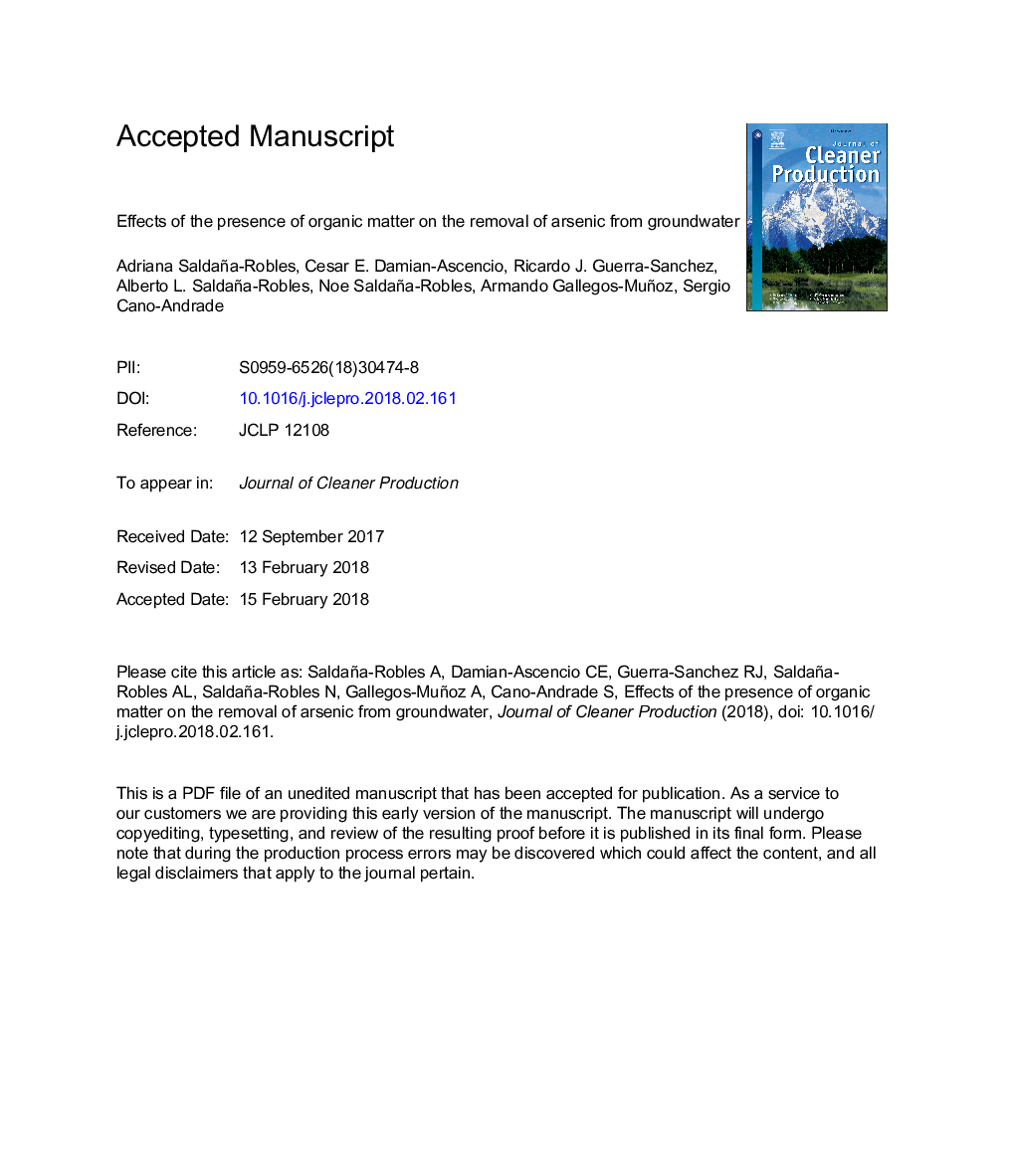| Article ID | Journal | Published Year | Pages | File Type |
|---|---|---|---|---|
| 8097122 | Journal of Cleaner Production | 2018 | 31 Pages |
Abstract
Arsenic is a natural contaminant present in groundwater mantles which, in high concentrations, causes severe health and environmental problems such as the degradation of human health and the contamination of land used for agriculture during irrigation. Understanding the process of arsenic removal from water contributes to the sustainability of regions where this problem is present. This work presents an experimental study complemented with numerical predictions of the adsorption of arsenic (As(V)) in mini-columns using Granular Ferric Hydroxide (GFH) as adsorbent. The work focuses on the effects of the presence of organic matter, i.e., humic (HA) and fulvic (FA) acids, in a water inflow that is contaminated with As(V). The treatments contain the same concentration of organic matter, the same initial concentration of As(V) of 0.8â¯mgâ¯Lâ1, and the same amount of GFH of 2â¯g for the filters. Results show that the samples containing organic matter (HA and FA) show a lower adsorption capacity, a lower breakthrough volume, a lower pH, and a non uniform saturation of the GFH filter. The results suggest the need to include the effects of organic matter in all subsequent analyses of arsenic removal from water because organic matter is always present in real life scenarios. Also, this work provides useful information to solve the problematic of the presence of high concentrations of As(V) (greater than 50â¯Î¼gâ¯Lâ1) in the water mantles of the Bajio region of Mexico.
Related Topics
Physical Sciences and Engineering
Energy
Renewable Energy, Sustainability and the Environment
Authors
Adriana Saldaña-Robles, Cesar E. Damian-Ascencio, Ricardo J. Guerra-Sanchez, Alberto L. Saldaña-Robles, Noe Saldaña-Robles, Armando Gallegos-Muñoz, Sergio Cano-Andrade,
